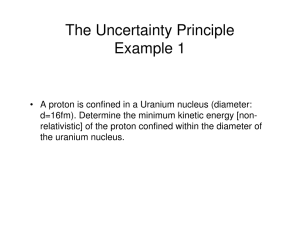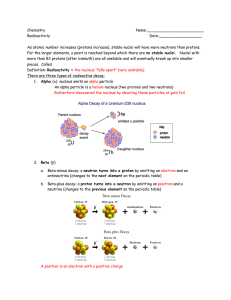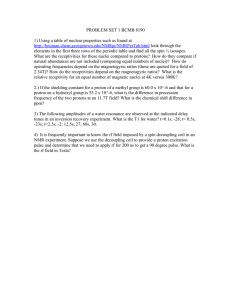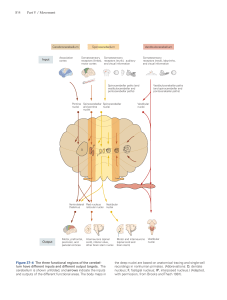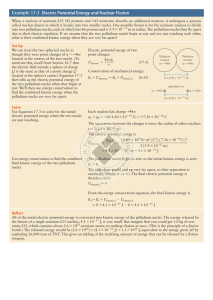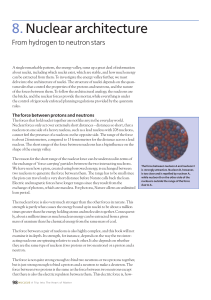Sample _probs Mt2The principle of conservation of energy is
advertisement
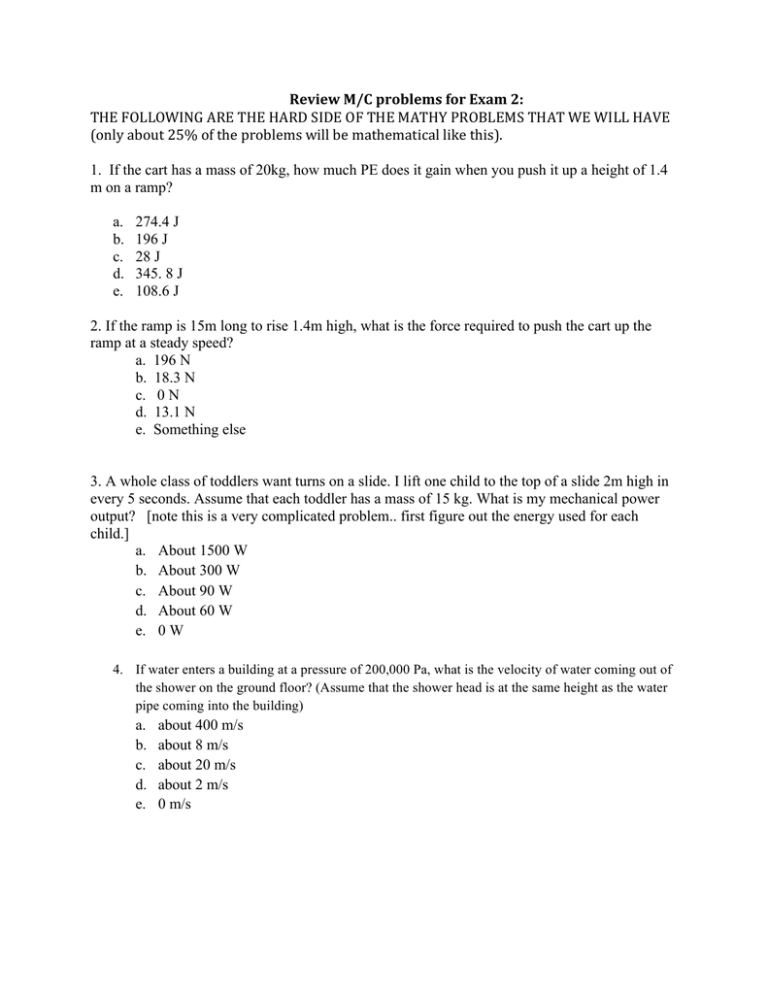
Review M/C problems for Exam 2: THE FOLLOWING ARE THE HARD SIDE OF THE MATHY PROBLEMS THAT WE WILL HAVE (only about 25% of the problems will be mathematical like this). 1. If the cart has a mass of 20kg, how much PE does it gain when you push it up a height of 1.4 m on a ramp? a. b. c. d. e. 274.4 J 196 J 28 J 345. 8 J 108.6 J 2. If the ramp is 15m long to rise 1.4m high, what is the force required to push the cart up the ramp at a steady speed? a. 196 N b. 18.3 N c. 0 N d. 13.1 N e. Something else 3. A whole class of toddlers want turns on a slide. I lift one child to the top of a slide 2m high in every 5 seconds. Assume that each toddler has a mass of 15 kg. What is my mechanical power output? [note this is a very complicated problem.. first figure out the energy used for each child.] a. About 1500 W b. About 300 W c. About 90 W d. About 60 W e. 0 W 4. If water enters a building at a pressure of 200,000 Pa, what is the velocity of water coming out of the shower on the ground floor? (Assume that the shower head is at the same height as the water pipe coming into the building) a. b. c. d. e. about 400 m/s about 8 m/s about 20 m/s about 2 m/s 0 m/s The majority of questions will be conceptual. See the review notes from class, the hw, and the lecture clicker questions. 5. The principle of conservation of energy is a. b. c. d. e. True in the absence of friction A useful rule of thumb Never broken True, provided g = 9.8 m/s2 Only applicable near the surface of the earth. 6. If you have a beaker (or reservoir) of stationary water that is open at the top, what happens to the pressure as you drop further down in the liquid (e.g. what happens if you’re a scuba diver in the beaker)? a) pressure is constant b) pressure increases c) pressure decreases d) can’t tell 7. (T/F) Water is flowing steadily through a horizontal pipe. One section of the pipe has half the diameter of the rest of the pipe, and the water speeds up to get through this section. Since the water has accelerated, we also know that the water pressure must be higher in the narrow section 8. What principle is Bernoulli’s Equation based on? a. Conservation of energy for each small volume of water b. Conservation of force for each small volume of water c. Newton’s second law applied to each small volume of water d. Conservation of momentum for each small volume of water e. Conservation of heat for each small volume of water 9- 16. As we have discussed in class, potential energy curves are a useful tool for making sense of nuclear processes such as alpha-decay, fission, and fusion. The potential energy curve for each different type of nucleus is different and depends on the number of protons and neutrons. Below are plots of the potential energy as a function of the distance from the center of the nuclei for several atoms: 9.) [1.5pts] Describe why the potential energy curve for a nucleus has this type of shape. If you’d like you can discuss this in the context of the energy of a proton that starts out traveling towards the nucleus at a fast clip, and thinking about what forces the proton is feeling as it approaches, and how this is affecting its speed and its potential energy. Remember the graph is representing the potential energy only. Questions 10-19: Examine the curves above and decide on the following: 10.) Which of these nuclei has the largest number of protons? A B C D E F 11.) Which of these nuclei has the smallest number of protons? A B C D E F 12.) For which of these nuclei does it take the most energy to add another proton? A B C D E F 13.) Which nucleus would release the most amount of energy if fissioned? A B C D E F 14.) Which nucleus would likely undergo alpha-decay the soonest? A B C D E F 15.) Which of these nuclei is the most stable? A B C D E F 16.) Which atom would release the most energy if undergoing fusion with a deuterium atom? A B C D E F
